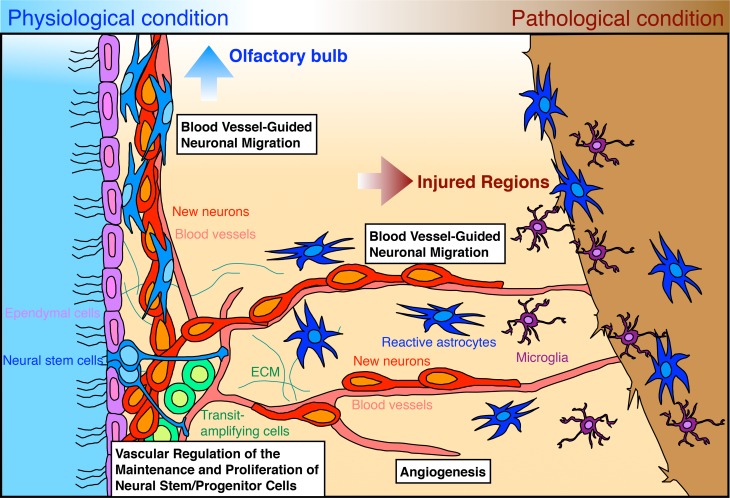Figure 1.
Vascular regulation of adult neurogenesis in the V-SVZ under physiological and pathological conditions. Neural stem cells (blue) and transit-amplifying cells (green) contact blood vessels (pink) in different manners and generate new neurons (red). Blood vessel-derived factors regulate the maintenance and proliferation of neural stem cells and transit-amplifying cells within the V-SVZ. The generated new neurons form chains and migrate along blood vessels toward the OB. Ependymal cells lining the wall of the lateral ventricle are shown in light purple. In the injured brain, neurogenesis and angiogenesis are dynamically upregulated. The injury results in increased levels of growth and trophic factors, which control both angiogenesis and various aspects of neurogenesis (the genesis, migration, or maturation of new neurons). Some new neurons generated in the V-SVZ migrate in chains along blood vessels toward the injured regions. New neurons migrating toward injured regions are attracted by various chemokines secreted from reactive astrocytes (dark blue) and microglia (dark purple).

